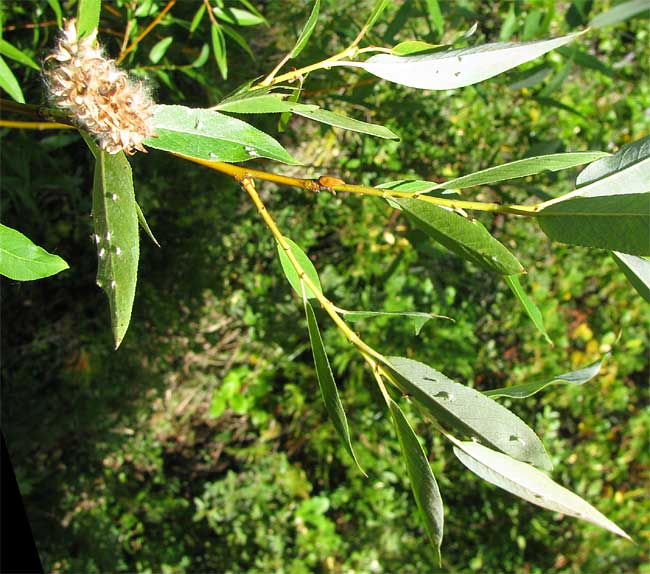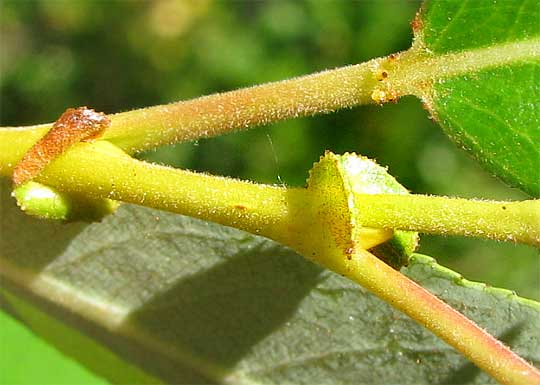Excerpts from Jim Conrad's
Naturalist Newsletter

from the the August 30, 2009 Newsletter, issued from the Siskiyou Mountains west of Grants Pass, Oregon:
WILLOWS AT A MOUNTAIN SEEPAGE
As the dry season grows ever more severe, water during my long mountain hikes becomes more of a problem. I'm always on the lookout for springs or even muddy seepages, and one way to find them is to look for willows. In this landscape where evergreen conifers reign supreme, deciduous willows are easy to spot. This week near Onion Mountain at about 4000 feet I found a classic seepage with its willows, and of course then I started wondering about the willow's identity. You can see its shiny, pale-bottomed leaves, arising from yellow stems and accompanied by a catkin with its baglike, capsular fruits splitting open to release large numbers of fuzzy-white-parachuted seeds above.
Closer up you can see some good field marks, shown below:

Running horizontally across the picture is a velvety, yellow stem, with leaf petioles diagonally arising from the stem above and below. The earlike items at the very base of each petiole are stipules, which often serve to protect leaves and shoots as they emerge from their buds, and then drop off. Among many willow species, however, they persist on the stem as these have. Stipules come in many sizes and shapes.
The rounded stipules with little bumps along their edges are important field marks for this species. The bumps are glands, and those are glands, too, at the blades' bases and atop of the petioles. The stipule shape, glands, and the slender-pointed leaves shiny above and silvery below all lead to: Pacific Willow, SALIX LASIANDRA, a common species in wet spots throughout western North America.
During the identification process hairiness can be helpful sometimes but in general -- unless you have some really spectacular hairs -- it's a weak character. Leaves, petioles and stems can be hairy when they're young but hairless when old. Hairiness also is a feature liable to change from subspecies to subspecies.
You probably know that all willows produce salicin, a compound closely related to acetylsalicylic acid, commonly known as aspirin. Native Americans used various preparations from willows for toothache, stomachache, diarrhea, dysentery, and even dandruff. They also used willow stems for basketry and bow making, and the bark for tea and fabric making. Pacific Willow's slender branches are excellent for use in screening and making windbreaks, and the tree itself is worthy of being included in landscaping plans.